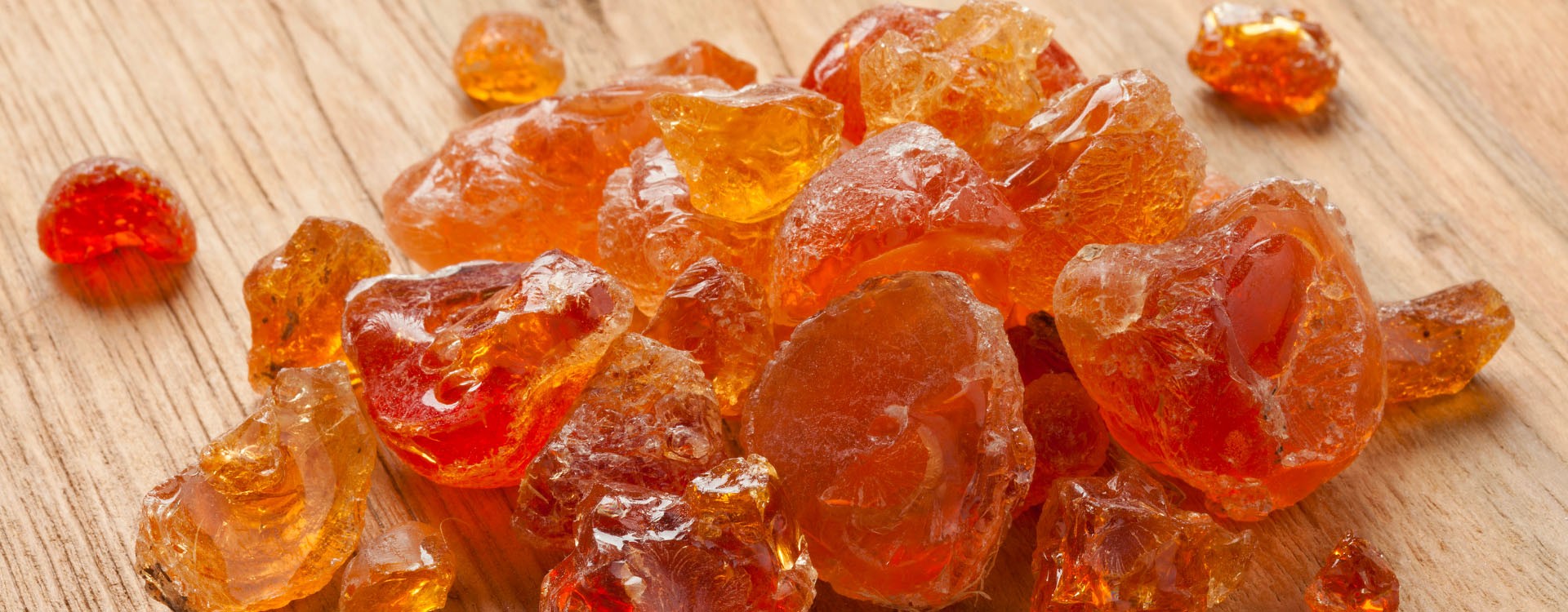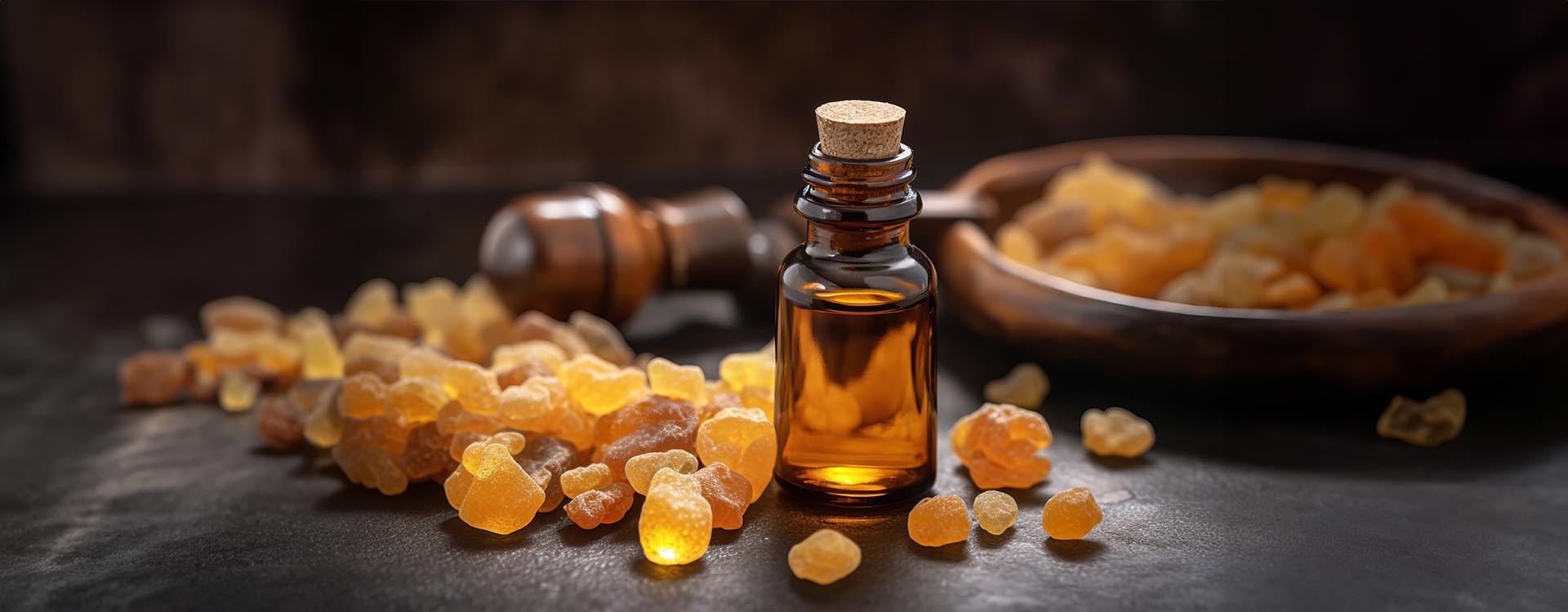Gum arabic: between cooking, perfumery and art

Gum Arabic in the kitchen
gumarabic, sometimes called gum acacia, is a natural substance with a wide range of uses in the kitchen. In this section, we'll explore its origin, extraction process, traditional culinary uses and modern culinary applications. Gum arabic is extracted from theacacia arabica tree, native to Africa and the Arabian Peninsula. The extraction process is relatively simple: the bark of the tree is incised, allowing the gum to flow naturally. It is then harvested, dried and processed into various forms, including powder and granules. Gum Arabic has a long history of use in cooking, notably in African and Middle Eastern cuisines. Some of its traditional uses include making refreshing drinks to give texture and consistency to traditional beverages such as tamarind juice or hibiscus drink. As a thickening agent, gum arabic can be used to make sauces and desserts, and is also an essential ingredient in the preparation of sweets, chewing gum, dragées and other confectionery. Beyond its traditional uses, gumarabic is now finding its way intomodern cooking , not least because of its unique properties. Gum arabic is widely used as a stabilizer in many food products. It helps maintain the texture and consistency of foods, particularly in dairy products, beverages and desserts. It is also a natural thickener used to thicken sauces, soups and even glazes. It also acts as a binder, helping to hold ingredients together in baked goods and culinary preparations. Creative chefs the world over are exploring new possibilities with gum arabic. It is increasingly incorporated into exotic recipes, giving rise to unique and innovative dishes. Gum Arabic is a fascinating example of how a traditional ingredient can evolve to meet the needs of modern cuisine.
Gum arabic in perfumery
Gum Arabic has played an essential role in the art of perfumery for centuries. In this section, we explore the history of its use, the perfume extraction process, and its current applications in the perfume industry. The history of gumarabic in perfumery dates back to ancient times. It was already known to the ancient Egyptians, who used it to create precious perfumes and ointments. Over the centuries, gum arabic has become an essential ingredient in the creation of quality perfumes. The perfume extraction process is an art form in itself. It relies on the ability to capture the natural essences of plants, flowers and aromatic substances. Gum arabic is involved in this process as a stabilizer for certain raw materials. It preserves the olfactory composition of fragrances, while helping to prolong their shelf life. gumarabic is often used as a perfume fixative. It plays an essential role in helping to maintain the stability of olfactory notes in a perfume. As a fixative, it enables the fragrance to last longer on the skin, guaranteeing a lasting olfactory experience. Gum arabic also offers a range of opportunities for creative perfumers. It can be used to create specific and unique olfactory notes. By experimenting with different plant extracts and aromas, perfumers can develop distinct olfactory compositions that evoke unique emotions and memories. In this way, gum arabic remains an essential element in the perfume industry, contributing to the creation of captivating, long-lasting fragrances.
Gum Arabic in art
The gumarabic is a versatile material that has found its place in the art world for many years. In this section, we'll explore its traditional use in painting, modern techniques employing it in contemporary art, and some examples of contemporary artists incorporating gum arabic into their work. Gum Arabic has a long history of use as a binder in painting. Artists of Antiquity and the Middle Ages often used it to fix pigments to the surfaces of their works. It is particularly prized in the creation of watercolor paintings, where it can be used to dilute colors and achieve transparent effects. As artistic techniques have evolved, gum arabic has continued to be a valuable tool for modern artists. It is widely used incontemporary art to create textures, for example, by mixing it with painting mediums to create unique textures and relief effects. Artists also use gum arabic as a resistance technique, using it as a barrier to prevent certain parts of the surface from receiving paint, thus creating resistant patterns. Finally, it is still used to fix pigments in works of art, guaranteeing their durability. Many contemporary artists have explored the possibilities offered by gum arabic in their artistic practice, giving rise to unique and vibrant compositions. Gum Arabic continues to inspire artists around the world, offering a creative means of exploring new textures, techniques and artistic expressions. It has become an invaluable part of the toolbox of many contemporary artists, contributing to the evolution of modern art.
Benefits and precautions for using gum arabic
As well as its use in cooking, perfumery and art, gum arabic also has health benefits. However, it is essential to be aware of the precautions to be taken when using it.
Health benefits
gumarabic is known for its beneficial effects on the digestive system. It can help relieve gastrointestinal disorders such as bloating, constipation and digestive problems. As a prebiotic, it promotes the growth of beneficial intestinal bacteria, contributing to better digestive health. Studies have suggested that gum arabic has anti-inflammatory properties. It can help reduce inflammation in the body, making it a potential supplement for people with chronic inflammatory conditions such as arthritis.
Precautions for use
Although gum arabic is generally considered safe, some people can develop allergies to this ingredient. It is essential to do a skin test before using it in large quantities or consuming it for the first time. If allergic reactions such as rashes, itching or breathing difficulties occur, discontinue use immediately and consult a health professional. Excessive consumption of gum arabic can lead to undesirable effects, such as digestive problems, bloating and diarrhoea. It's essential to stick to the recommended doses and not abuse the product. If you are considering using gum arabic for medicinal purposes, consult a health care professional to determine the appropriate dosage. In summary, gum arabic offers health benefits, notably for the digestive system and its anti-inflammatory properties. However, it's crucial to take precautions, especially in the event of possible allergies, and to respect recommended doses, to take full advantage of its benefits while minimizing potential health risks.
Conclusion
Gum Arabic is much more than just an ingredient. It's a window on creativity, discovery and health. We encourage you to further explore this versatile substance and incorporate it into your daily life, whether to enhance your culinary recipes, create unique fragrances or experiment with new artistic techniques. At Real and Roots, our commitment to quality and authentic products, including gumarabic, is unwavering. We're here to provide you with superior options to enrich your experience. Explore our product range on our website and discover how gum arabic can become an essential part of your daily life.



